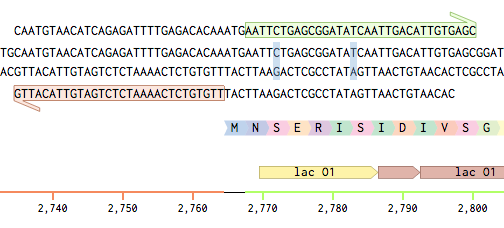Assembly Wizard
Today, we're releasing an assembly wizard to help scientists design constructs via restriction-based methods and Gibson assembly to work toward our goal of making cloning as painless as possible.
Creating a new assembly

To start using the assembly wizard, open any sequence and create a new assembly from the "Assembly Wizard" button at the bottom right of the Benchling editor. After selecting your cloning strategy, you'll be able to create fragments from selected regions of any open sequence. If you're using restriction, Benchling shows you warnings about issues that may cause your experiment to fail, such as sitcky ends not properly matching and cut sites in the middle of fragments.
Clicking on the "Show Preview" button will allow you to create the resulting sequence. For Gibson assembly, Benchling auto-generates primers using parameters about the desired melting temperature and overlap length that you specify.

Benchling stores links from the resulting sequence to the ones you used to generate it. These links can be accessed from the history panel for now, but we're planning to build a full lineage tracking tool soon to help manage your lab's plasmid strains.
Editing primers in Gibson assembly

Benchling makes it easy to adjust the primers the assembly wizard automatically generates. After you create the sequence, the "Gibson Primers" tab lists useful metrics on the quality of each primer. In addition to melting temperature, you can see potential mispriming and secondary structure problems. The length of the binding and homology region for any primer can be adjusted by opening it in the "Edit Primer" tab.

You can also easily introduce mismatches or additional bases at Gibson junctions. These edits can be performed directly on the sequence map. Select any bases covered by Gibson primers and type to replace them, or place the cursor at a Gibson junction and type to insert new bases. Both the forward and reverse primers are automatically updated to incorporate the change, and mismatches with the parent sequence are labeled. Benchling properly versions the sequence and primers so you can undo any edit you make.
As always, feedback on this new feature is welcome. If you have suggestions or would like to see a new assembly technique incorporated, drop us a line at hello@benchling.com.
Happy cloning.
Powering breakthroughs for over 1,300 biotechnology companies, from startups to Fortune 500s
